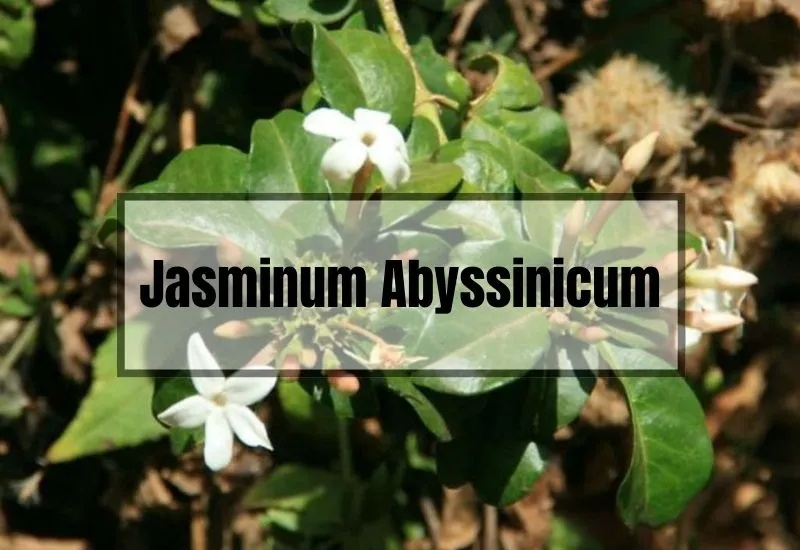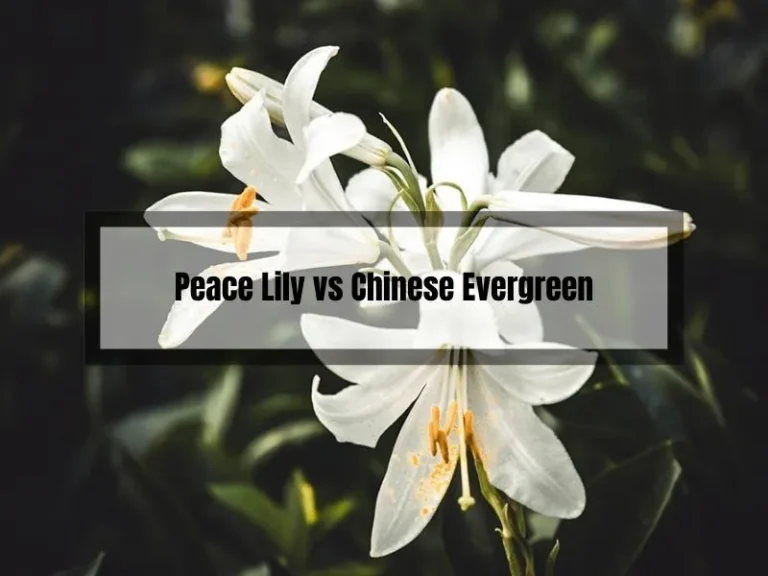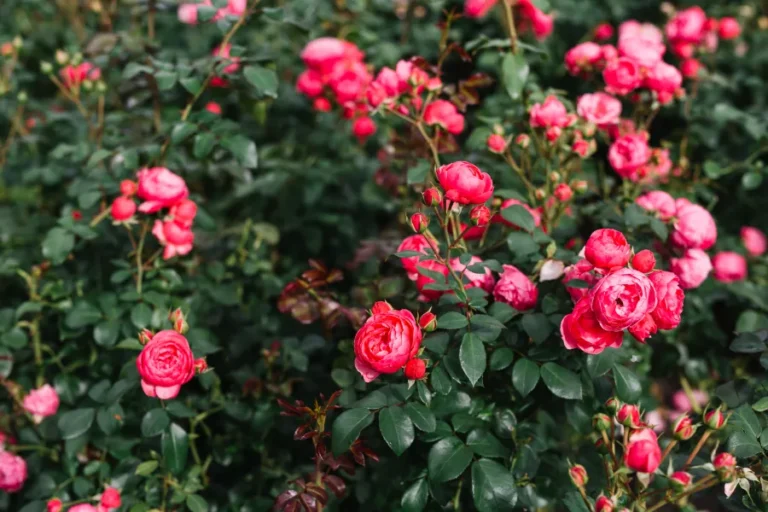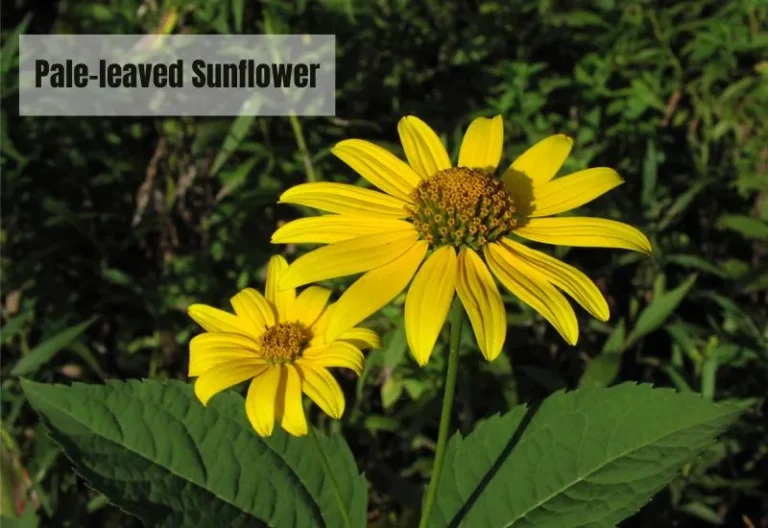Jasminum Abyssinicum: A Comprehensive Guide to Growing and Caring for this Rare Species
From Louise: Passionate about gardening, I specialize in plant care and flower knowledge. I’m here to share my expertise and assist with your gardening queries. Feel free to ask any questions or seek advice on lawn care—I’ll respond within 24 hours!
African Jasmine, also known as Jasminum abyssinicum, is a beautiful flowering plant that can grow up to 10 feet tall. With its glossy dark green leaves and clusters of small, fragrant, white flowers, this plant is a stunning addition to any garden.
However, to ensure its healthy growth and longevity, it is crucial to understand the care, pests, and diseases of African Jasmine. Proper care involves knowing the ideal soil and sunlight requirements, watering schedule, fertilization, pruning, and transplanting techniques. Additionally, recognizing common pests and diseases that can affect the plant’s health is vital for prevention and effective treatment.

In this article, you will learn about African Jasmine and the importance of understanding its care, pests, and diseases. You will gain valuable knowledge that will enable you to grow and maintain this plant successfully.
We will provide an overview of African Jasmine, including its taxonomy and distribution, physical characteristics, cultivation and propagation, care, common pests, and diseases. By the end of this article, you will have a better appreciation of African Jasmine and the knowledge required to care for it properly.
Key Takeaways
- African Jasmine is a beautiful flowering plant that can grow up to 10 feet tall.
- Proper care involves knowing the ideal soil and sunlight requirements, watering schedule, fertilization, pruning, and transplanting techniques.
- Recognizing common pests and diseases that can affect the plant’s health is vital for prevention and effective treatment.
Taxonomy and Distribution
Jasminum Abyssinicum is an evergreen shrub belonging to the Oleaceae family, which also includes popular plants like olive trees and lilacs.
This woody plant species can grow up to 3 meters tall and is native to East Africa, particularly in countries like Ethiopia, Kenya, Tanzania, and Uganda. It is also cultivated in other parts of the world, including the United States, Europe, and Asia.
Physical Characteristics
Jasminum Abyssinicum is a stunning plant with glossy, dark green leaves and delicate white flowers that grow in clusters.
The flowers have a sweet, heady fragrance that is similar to that of other jasmine plants. This plant can grow up to 3 meters tall and has a bushy, spreading growth habit. It prefers warm and humid climates and can be grown both indoors and outdoors.
Cultivation and Propagation
Jasminum Abyssinicum is a relatively easy plant to cultivate and propagate. It prefers well-drained soil and requires regular watering and fertilization.
To propagate the plant through cuttings, take a 10-15 cm cutting from the tip of a healthy stem and remove the lower leaves.
Dip the cutting in rooting hormone and plant it in a pot filled with a mixture of sand and peat moss. Keep the cutting moist and in a warm, bright location until it roots and begins to grow.
Care for African Jasmine
If you want to keep your African Jasmine plant healthy and beautiful, you need to provide it with the right care. Here are the care tips you need to follow:
Soil Requirements
African Jasmine requires well-draining soil with a slightly acidic to neutral pH range (6.0 to 7.0).
The soil should be rich in organic matter and nutrients, so you should add compost or aged manure to the soil. Loose and crumbly soil helps with root growth and water retention.
Sunlight Requirements
African Jasmine thrives in full sunlight but can also tolerate partial shade. For healthy growth and flowering, the plant should receive at least 6 hours of direct sunlight per day.
Watering Schedule
African Jasmine needs regular watering, especially during the growing season. Water the plant deeply once or twice a week, depending on the weather and soil moisture levels.
Avoid overwatering, as it can lead to root rot and other diseases. Reduce the watering frequency to once every two to three weeks during the winter months.
Fertilization
Fertilize African Jasmine regularly to promote healthy growth and flowering. Use a balanced, slow-release fertilizer every four to six weeks during the growing season.
Alternatively, you can use a liquid fertilizer every two weeks. Follow the package instructions and avoid over-fertilizing, as it can cause fertilizer burn and harm the plant.
Pruning
Pruning is an essential part of caring for African Jasmine. It promotes new growth and prevents the plant from becoming too leggy or overgrown. Prune the plant in the late winter or early spring before new growth appears.
Remove any dead or damaged branches and any growth that is crossing or rubbing against other branches. You can also shape the plant as desired by selectively removing branches.
Transplanting
Transplant African Jasmine in the early spring before new growth appears. Choose a new location with well-draining soil and good sunlight exposure. Dig a hole slightly larger than the root ball and carefully remove the plant from its container or previous location.
Place the plant in the new hole and backfill with soil, gently pressing down to remove any air pockets. Water the plant thoroughly and continue to care for it as usual.
By following these care tips, you can ensure that your African Jasmine plant remains healthy and beautiful for years to come.
Related Posts:
Common Pests of Jasminum Abyssinicum
Jasminum abyssinicum is a beautiful plant that is highly susceptible to pest infestations. The most common pests that affect this plant include aphids, spider mites, whiteflies, mealybugs, and thrips.
Symptoms of Pest Infestations
Pest infestations can be identified by a range of symptoms, including yellowing or browning of leaves, wilting or drooping of leaves, curling or distortion of leaves, stunted growth, presence of sticky residue or mold, fine webbing on the plant, silvery streaks or spots on leaves, and discoloration or distortion of flowers.
Prevention and Treatment of Pests
The best way to prevent pest infestations is to maintain a healthy growing environment for the plant.
This includes proper watering and fertilization, regular pruning and maintenance, avoiding overcrowding of plants, and removing any infected or diseased plant material.
If a pest infestation is identified, there are several treatment options, including spraying the plant with a solution of insecticidal soap or neem oil, using beneficial insects such as ladybugs or lacewings to control the pests, or physically removing the pests with a strong stream of water or by handpicking them off the plant.
It’s important to note that chemical pesticides should be used only as a last resort, as they can be harmful to beneficial insects and the environment.
Common Diseases of Jasminum Abyssinicum
Jasminum abyssinicum is a hardy plant that can tolerate a variety of growing conditions.
However, like all plants, it is susceptible to certain diseases that can impact its health and vitality. Here are some common diseases that can affect Jasminum abyssinicum:
1. Powdery Mildew
Powdery mildew is a fungal disease that can affect Jasminum abyssinicum. It appears as a white or grayish powdery substance on the leaves, stems, and flowers of the plant. The disease is caused by a fungus that thrives in warm, humid conditions. Symptoms of powdery mildew include stunted growth and a weakened plant.
To prevent powdery mildew, avoid overwatering your plant and ensure good air circulation around it. If your plant does develop powdery mildew, you can treat it with a fungicide.
2. Root Rot
Root rot is a fungal disease that affects the roots of plants. It is caused by overwatering or poor drainage, which leads to a buildup of moisture around the roots.
Symptoms of root rot include yellowing leaves, wilting, and stunted growth. If left untreated, root rot can lead to the death of the plant.
To prevent root rot, make sure your plant is planted in well-draining soil and avoid overwatering it. If your plant does develop root rot, you may need to repot it in fresh soil and trim away any damaged roots. For more information on root rot, check out this helpful guide.
3. Leaf Spot
Leaf spot is a fungal disease that can cause brown or black spots to appear on the leaves of Jasminum abyssinicum. The disease is caused by a fungus that thrives in wet conditions. Symptoms of leaf spot include brown or black spots on the leaves and stunted growth.
To prevent leaf spot, avoid overwatering your plant and ensure good air circulation around it. If your plant does develop leaf spot, you can treat it with a fungicide.
4. Rust
Rust is a fungal disease that appears as orange or brown spots on the leaves of Jasminum abyssinicum. The disease is caused by a fungus that thrives in warm, humid conditions. Symptoms of rust include orange or brown spots on the leaves and stunted growth.
To prevent rust, avoid overwatering your plant and ensure good air circulation around it. If your plant does develop rust, you can treat it with a fungicide. For more information on rust, check out this helpful guide.
Symptoms of Diseases
It is important to keep an eye on your Jasminum abyssinicum for any symptoms of disease. Common symptoms include wilting, yellowing leaves, brown or black spots on the leaves, and stunted growth.
By catching and treating diseases early, you can prevent them from spreading and causing further damage to your plant.
Prevention and Treatment of Diseases
Preventing diseases in Jasminum abyssinicum involves maintaining good growing conditions, including proper watering, fertilization, and pruning.
If your plant does develop a disease, there are a variety of treatments available, including fungicides and pruning away affected areas. It is important to follow the specific treatment guidelines for each disease and to continue monitoring your plant for any further symptoms.
Frequently Asked Questions (FAQs)
What is the best way to propagate Jasminum abyssinicum?
Jasminum abyssinicum can be propagated through seeds or cuttings. If you’re using seeds, you’ll want to soak them in water for at least 24 hours before planting them in a seed tray. Keep the soil moist and warm, and the seeds should germinate in a couple of weeks.
If you’re using cuttings, take a stem cutting that’s about six inches long, and remove the leaves from the bottom two inches. Dip the cut end in rooting hormone, and then plant it in a pot with well-draining soil. Keep the soil moist and warm, and in a few weeks, the cutting should start to grow roots.
Can Jasminum abyssinicum be grown indoors?
While Jasminum abyssinicum is primarily an outdoor plant, it can be grown indoors in the right conditions. The plant needs bright, indirect sunlight and a warm, humid environment. You’ll also want to make sure the soil is well-draining and that you don’t overwater the plant.
How often should I fertilize my Jasminum abyssinicum?
Jasminum abyssinicum should be fertilized during the growing season, which is typically from spring to fall. You can use a balanced, all-purpose fertilizer every four to six weeks, following the manufacturer’s instructions. Be careful not to over-fertilize, as this can damage the plant.
What are some companion plants for Jasminum abyssinicum?
Jasminum abyssinicum can be planted with a variety of other flowering plants, such as roses, lavender, and lilies. These plants not only add visual interest to your garden, but they can also attract beneficial insects and pollinators.
How can I encourage my Jasminum abyssinicum to flower?
Jasminum abyssinicum typically blooms from late spring to early fall, but you can encourage more flowers by providing the plant with proper care. Make sure the plant is getting enough sunlight and water, and fertilize it regularly during the growing season. Prune the plant in the spring to promote bushier growth and more flowers.
Conclusion
By following the guidelines outlined in this guide, you can successfully care for your Jasminum abyssinicum plant. Remember to provide well-drained soil, regular watering, and fertilization to keep your plant healthy. Pruning and transplanting can also help maintain its shape and size.
It is important to be aware of common pests and diseases that can affect Jasminum abyssinicum, such as spider mites and leaf spot. Take preventative measures and use appropriate treatments to keep your plant healthy.
Growing Jasminum abyssinicum can be a rewarding experience, with its beautiful flowers and lovely fragrance. It can also attract pollinators and potentially provide medicinal benefits.
For more information about other types of jasmine plants, check out the related posts listed below.
Related Posts:






